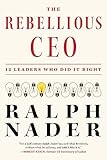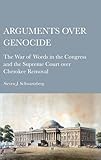Faced with a 12:01 a.m. Sunday morning eviction from the three city parks occupied for more than a month, Occupy Portland and its city supporters turned out in mass Saturday night and well into Sunday morning. At their height around the midnight deadline, crowds swelled to over 6,000 strong. This massive turnout came despite a police led fear campaign, in which reports were circulated via the local media claiming police “intelligence” indicating an influx of 150 out of town “anarchists” coming into the city for a violent confrontation.
When I first arrived at the occupied parks at 9:30 Saturday night, the encampments were noticeably thinned from just days earlier. Given that Mayor Sam Adams (who claims “support” for the Occupy movement) ordered the eviction in part to “clean” the parks so as to be able to reopen them to the “public,” campers had worked through the day to clean the parks themselves. This left substantially fewer tents erected within the parks. And as I traversed further through the camp, in a driving and chilling rain, I found only a few hundred occupiers gathered for an open mic. This all left the initial impression that the camp would likely fall soon after the eviction deadline lapsed.
But as the evening progressed, the crowds slowly began to mount. In fact, as it progressed past 11:00 p.m., the parks filled to capacity. At that point it was clear that the discussions and demonstrations ongoing on how best to resist arrest would not be immediately needed. Buoyed by arriving peace activists, encircling bicyclists, and others expressing solidarity with Occupy Portland, the crowds spilled out of the parks and onto the adjacent blocks. And as the 12:01 a.m. expulsion deadline neared, crowds eagerly chanted the final countdown, creating an atmosphere more akin to New Year’s Eve.
By 2:00 a.m., with the crowds still in the thousands, riot police began to move on the occupiers. Mounted patrolmen accompanied by the threat of tear gas were employed in an effort to push the crowds out of the streets and back into the parks. But after a thirty-minute standoff and isolated skirmishes, the police pulled back and the crowds filled into the streets surrounding the parks. In the wake of the retreating armored police, drum circles formed, as protesters jubilantly danced to chants of “Whose streets? Our streets.”
By 5:00 am—the normal opening time of the city’s parks—thousands still remained on the streets, creating barricades and holding protective lines against the police. And within a little less than an hour, the police had retreated fully from the streets, leaving the protesters to dismantle their barricades and triumphantly return to the occupied parks to chants of: “What does victory look like? This is what victory looks like.” Walking through the parks, I could see new tents being erected and energized campers working on a further cleaning of the park.
By midday, however, the police had returned to the parks in force. Interrupting a general assembly meeting, riot police slowly forced all occupiers out of the parks with shoves and the interspersed baton strike. Soon the encampments in all three parks were cleared of campers. The raid left more than 50 protesters arrested. (But as is always the case, police were uncertain of exactly how many people they had managed to detain during the day). At least one protester was taken to the hospital after sustaining blows to the chest from a police truncheon.
As word spread of the midday police action, hundreds of protesters returned to the park blocks. Growing to a thousand or more, the protesters settled into an occupation of a street block just west of the cleared parks for the next several hours. A general assembly meeting was then held in the blocked street, as the riot police in formation mere feet away repeatedly broadcast calls threatening tear gas and arrest. Debates followed over whether to seek to hold onto the street, or regroup at another location. As dusk fell, the protesters agreed to leave the street and march to an adjacent city square, with many expressing interest in ultimately moving to the campus of Portland State University.
Although necessitated by the afternoon police action, the discussion over the next phase of the struggle and movement had begun prior to Sunday. Multiple occupiers had already begun to express an interest in staging future occupations of vacant buildings, as has been seen in other Occupy movements across the country. In addition, discussion and planning was also underway on the national day of action this coming Thursday, in which attempts will be made to occupy commercial banks.
Thus, although ultimately cleared out of their encampments, Occupy Portland demonstrated its continuing relevance as a vibrant and powerful movement. For if nothing else, the battle Saturday night and early Sunday morning confirmed that the movement has strong support within the city and is more than capable of mobilizing sizable masses to stymie police action. Beyond question then, Occupy Portland will continue to be a force in the national Occupy movement.










